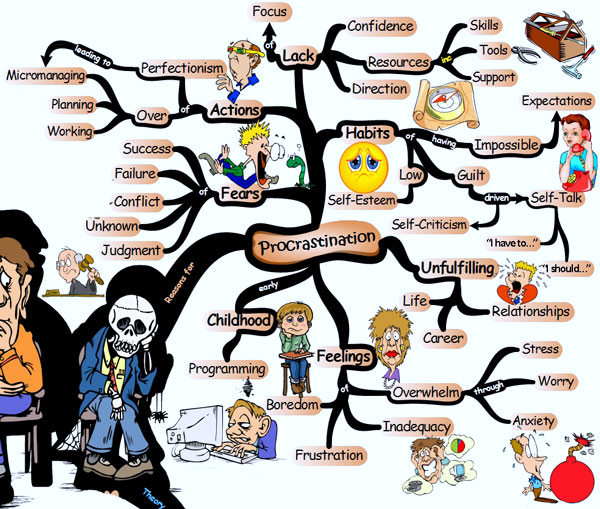Category Archives: Positive Attitude
Interpreting the Runes ~ Wunjo ~ Joy ~ Light
“God grant me the serenity to accept the things I cannot change, the courage to change the things I can, and the wisdom to know the difference.” — Adapted from the words of Reinhold Niebuhr
Wunjo is considered to be a positive rune and when drawn in the upright position will always represent joy and happiness coming into life. It is an excellent omen in a reading. A shift, that was due, has occurred and the blessings associated with Wunjo may freely be received and accepted. These blessings may relate to material gain, emotional life, or in a heightened sense of one’s own well-being. Be happy!
In combination with other runes, it indicates success in whatever areas they rule. For example, with travel runes such as Raidho or Ehwaz, it can show a fortunate and generally pleasing journey; with message runes such as Ansuz, it can mean good news; when Wunjo is drawn with love related runes, in can show deep affection and long-lasting emotional happiness.
Often, Wunjo will signify the object of one’s affections. In this case, it usually shows some activity undertaken with this person will end with a happy result.
Wunjo can also represent joy in one’s work, especially if that work is artistic or creative . Like the rune Kenaz, Wunjo appears in readings for people who are artists or craftsmen and shows that this creative element is very important to their personal happiness and wellbeing.
Reversed The meaning of Wunjo reversed is exactly the opposite of everything stated about its meaning in the upright position. Things are slow in coming and the person for whom the runes are being consulted may be undergoing a difficult, if not crisis time, filled with misery and unhappiness.
The runes drawn in addition to Wunjo should show the specific problem areas. Drawn with Raidho or Ehwaz, an unsafe or unsuccessful trip with breakdowns and delays are indicated and are likely.
If the question being asked relates to one’s employment, Wunjo reversed warns of dissatisfaction, either with the job itself or with one’s job performance.
In matters of love, this rune shows disappointment or a delay of some type in a present relationship, the intensity of which can be discerned from the other runes drawn.
In all questions about business, travel or love, Wunjo reversed shows a need for caution, perhaps even putting off an important decision until a seemingly better time.
The rune of Wunjo can also show trouble caused by a third-party in the form of friction and delays. One should be on the lookout for any possible double-dealing on the part of acquaintances, friends, business associates or opponents.
Related articles
- Interpreting the Runes XIX Ehwaz ~ Movement ~ Progress ~ The Horse (christophersmark.wordpress.com)
Interpreting the Runes ~ Ehwaz ~ Movement ~ Progress ~ The Horse
Ehwaz is a rune of transit, transition and movement; of physical shifts, new dwelling places, new attitudes or new life. It also signifies movement in the sense of improving or bettering any situation.
With this rune, there is a sense of gradual development and steady progress, with the belief in slow growth through many shifts and changes. This could apply to the growth of a business or to the development of a new idea. A relationship may need to undergo changes if it is to live and grow. Moral effort and steadfastness are called for when this rune of movement, another of the cycle runes is drawn. Let it be said with this affirmation, “As I cultivate my nature, all else follows.”
This rune Ehwaz is symbolized by the horse, and it signifies the bond between horse and rider. Bronze Age artifacts show a horse drawing the sun across the sky. Here, Ehwaz is saying, you have progressed far enough to fee a measure of safety in your place.
Now is the time to turn again and face the future reassured, ready to share the good fortune that comes your way. The sharing is significant since it relates to the sun’s power to foster life and illuminate all things with its light.
Ehwaz Reversed
Movement that appears to block. Be certain that what you are doing – or not doing – is timely. There are no missed opportunities. You have simply to recognize that not all possibilities are open to you, that not all opportunities are appropriate. The opportunity at hand may be precisely to avoid action. If you are feeling at a loss, unclear about the need to act, consider what is timely to your nature and remember this affirmation, “What is yours will come to you.”
Related Articles
- A-Z: Ink rune magic from Cradle of Rabies – From role to games (cradleofrabies.blogspot.com)
Omnipotent and Ageless: Your Majesty the Baby

“In the difficult are the friendly forces, the hands that work on us.” — Rilke
Too often we imagine life as sort of a magic carpet ride taking us wherever we wish to go. Perhaps we’re watching television and an ad hooks into some fantasy we have in our mind and convinces us the world is at our beck and call. We are omnipotent again, just as we were in infancy – “Your Majesty the Baby!”
But what would such a “magical” life yield in terms of change and growth? Why would we even bother to strive if we could have everything we want or crave? We would be the same at age fifty as we were at thirty and fifteen and five months – “Your Majesty the Baby!”
We need change and for the most part a majority of us are able to welcome it, even if change means some difficult growing pains. With a little guidance from the Universe, we can strive toward an abundance of goodness. We are omnipotent, but we are not alone. We are part of a human community, and we can be in touch with that Power which is beyond ourselves. That is the real miracle!
Related Articles
- The Innocence of Children (christophersmark.wordpress.com)
- Ego Ideal – on The Personality Concept (socyberty.com)
- Could An Omnipotent Being Prove It? (juliansanchez.com)
Gemini Personality Traits v. Taurus
According to astrology, people who are born between the dates, 20th April and 21st May, are Taurus, while those who are born between May 21st and June 21 are Gemini.
Taurus Characteristics
On the positive side, people born under the sign of Taurus are very reliable people, who believe in fulfilling their duties, both professionally and personally. Taurus people are the “home loving” kind, who like to take care of their families and loved ones. Taurus people also love the material things in life. They want to live in the best of houses with the best of interiors and the most beautiful man or woman as their partner.
Highly determined and stubborn, people born under the sign of Taurus never ever change their mind or opinions, about anything. They can also be very rigid and argue for hours together, just to prove their point. A fiery temperament is something that most Taurus people hide well under their cool exteriors. If ever provoked, the person on the receiving end will certainly suffer.
Gemini Characteristics
Those born under the sign of Gemini are very intelligent and bright, making them the center of attraction in any party or group. They are also born flirts, and with their natural talent for communication, and can sweep any person off their feet. Gemini’s are also very independent and do not like people telling them what to do or not to do in life. Gemini’s are great at multi tasking and can work equally well at a number of projects simultaneously.
Despite these positive Gemini traits, Gemini’s do have a few drawbacks. Gemini can be very reckless at times, making other people believe that they cannot be trusted. They are also often thought to be fickle minded, as they seldom finish the jobs that they take upon themselves. Indecisiveness is another Gemini trait, which baffles people who come in contact with Gemini’s.
Taurus and Gemini Compatibility
If you look at the Taurus and Gemini traits, it may seem at first that Gemini and Taurus compatibility is almost impossible. Taurus is strong, silent and slow, while Gemini’s are reckless, chatty and fast. They are completely opposite to each other, making Taurus/Gemini compatibility difficult. However, as is said that opposites do attract each other, so there can definitely be something in each of them which may lead to an attraction, making Taurus/Gemini match a possibility.
Gemini’s are indecisive and have a lot of nervous energy in them. The strength and maturity of a Taurus acts like a soothing ointment, making them feel calm and at peace. At the same time, Gemini’s fresh ideas and new ways of looking at life can inspire the Taurus and he can get a new perspective on life, by just being in the Gemini’s company. If both Taurus and Gemini are able to admire and appreciate these qualities in each other, and learn from each other, then Taurus Gemini friendship compatibility and even Taurus Gemini love compatibility can happen.
Taurus and Gemini Sexual Compatibility
Taurus loves a challenge and Gemini is very sexy to Taurus. Ruled by Mercury, Gemini has both beauty and brain. Taurus is an Earth sign and is of course grounded and needs security that Gemini may not give over time. This can drive Taurus to a breaking point. There is potential here as long as both are seeking drama, sporadic separations and dramatic reunions. To make a relationship work, Taurus should give Gemini lots of freedom and Gemini will have to tone down his or her carefree ways. Taurus should stay a mystery to Gemini for best results. Sex can be either horrible or amazing. A one-night stand will leave a lasting impression. Both signs will need to make many compromises if a long-term relationship is desired. Compatibility between these two signs is generalized and for greater accuracy, one’s planets, rising signs and other astrological aspects should be thoroughly explored.
Related Articles
- About Gemini (christophersmark.wordpress.com)
- I Am Gemini (christophersmark.wordpress.com)
- What? I’m not a Gemini any more? (underthelobsterscope.wordpress.com)
Integrate Healthy Sexuality Into Life
“Sex is one of the nine reasons for reincarnation. The other eight are unimportant.” — Henry Miller
Henry Valentine Miller (December 26, 1891 –– June 7, 1980) was an American novelist and painter. He was known for breaking with existing literary forms, developing a new sort of novel made up of autobiography, social criticism, philosophical reflection, surrealist free association and mysticism, one that is distinct always about and expressive of the real-life Henry Miller, and yet is also fictional. His works of this kind are Tropic of Cancer, Tropic of Capricorn and Black Spring. Henry Miller also was known to write travel memoirs and essays of literary criticism and analysis.
It is good and healthy to laugh about sex – as long as the laughter is on the side of life. Sex, after all, is part of the life force, and if it is surrounded by caring and honesty, it leads to a joyous intensification of our relationship with others and with the world. Then sex, like laughter, integrates.
Too often, laughing about sex betrays uneasiness, shame, disgust, and the want to hurt. We talk about “dirty jokes” and consign sex to the bathroom. We split off sex from other feelings and surround it with taboos and rituals and mockery. Viewed in this way, sex isolates us.
We need to learn to talk about our sexuality in a proud and affirmative way. Talking and laughing in a group, or with a friend, or with a loved one, is one of the steps we take to bring sex into the open to take its place as part of the diversity of life. Own your sexuality. Talk about it without shame and claim it a vital part of life.
Related Articles
- Setting Healthy Boundaries (christophersmark.wordpress.com)
- Exploring Healthy Sexuality (christophersmark.wordpress.com)
- Let’s not talk about sex (guardian.co.uk)
Interpreting the Runes ~ Berkana ~ Beorch ~ Birch Tree
“The Birch, though fruitless sends out countless shoots; leafy branches, high-crowned, reach to the sky.” — Old English Rune Poem
This rune is a fertility symbol, drawn to resemble a woman’s breasts. In ancient Viking times, the birch was regarded as the tree of fertility and the act of being lightly whipped with birch twigs was supposed to promulgate vigor and vitality! The people of Scandinavia still hold this belief; after a sauna people are encouraged to roll around in the snow and then made to endure a lashing with a bundle of birch twigs. The Phallic maypole that was traditionally danced around, heralding in Spring and new life, was usually made from birch. The appearance of Berkana in a reading clearly points toward inception; whether of a child, a project or perhaps a new idea.
Berkana is rather auspicious. Yet because it represents the mother, and by implication the child, there is an element of “nourishment” associated with it. Even if the rune is essentially beneficial the new project will need the same kind of feeding or succour as an infant would. Success will not come on its own without some nurturing; effort and attention will be required. This may explain the duality associated with the birch tree, the “fruitless tree,” implying that all is not as it seems and that success will be achieved only through authentic and genuine application.
Berkana Reversed
Reversed, Berkana becomes a symbol of sterility, implying difficulties and miscommunication, especially on the domestic front. Perhaps a desired pregnancy will prove impossible, or a current pregnancy be terminated. Alternatively, Berkana can point to worries over children, especially in terms of health. The surrounding runes always point to a clearer picture. A reversed Berkana is not particularly malign of itself and requires more ruthless runes to imply any real trouble, while helpful runes definitely reduce the situation.
Related Articles
- Interpreting the Runes XVII ~ Tiwaz ~ Tir ~ Creator (christophersmark.wordpress.com)
- Interpreting the Runes XVI ~ Sowelu ~ Sigel ~ Sun (christophersmark.wordpress.com)
- Interpreting the Runes XIII ~ Eihwaz ~ Yew (christophersmark.wordpress.com)
- Interpreting the Runes XIV ~ Perth~ Question Mark ? (christophersmark.wordpress.com)
Ask for Help
“Asking for help does not mean we are weak or incompetent. It usually indicates an advanced level of honesty and intelligence.” — Anne Wilson Schaef
I’ve received a lot of help lately. Most from my dearest friend and some from people I never imagined I would receive so much of their time or efforts. I don’t like to ask. I’ll spend more energy talking about how hard it is for me to ask, than the energy I’d expend simply asking for what I need.
Many of us may have grown up in isolation and with shame being constantly reinforced the way I did. Help began to feel like a luxury reserved for other people. I thought I didn’t deserve it. I thought I should be able to handle everything. I failed to realize just when I needed help, because I’m so accustomed to living life in a “crisis mode.” I tell myself that my concerns and problems aren’t important enough to bother somebody with. Then, when life becomes really complicated, I blame myself for feeling overwhelmed and almost unable to act.
But we all deserve help. We deserve all the help that we may want and need, whether it’s a ride to an appointment or for someone’s shoulder to cry on when we’re sad or upset. We are worth the time, effort and concern of others – not because any of us is different, but because we are the same.
Related Articles
- I Feel As Though I’ve Lost My Way In This World (christophersmark.wordpress.com)
- How does it make you feel? (jennasauber.com)
- The Kindness Blotter: A Spate of Compliments and Helping Hands (fort-greene.thelocal.nytimes.com)
Procrastination
“Without discipline, there’s no life at all.” –Katharine Hepburn
I have deadlines in my life that I must meet. Don’t we all? There are bills to pay, appointments to make, responsibilities at work or home, kids, pets, school and all the innumerable small markers that push life forward.
When I realize that I’m procrastinating I need to be committed to not shaming myself. Procrastination does not indicate failure. How realistic would it be if we looked forward to doing unpleasant things? It’s human to avoid what we’d rather not be doing.
I find that as I free myself from the burden of perfectionism, I’m free to better accept my responsibilities. Meeting deadlines as well as we can, one at a time, has a pay off in serenity and manageability of life. When we’re crisis ridden, we’re forced to live by other individual’s demands, rather than our own choices.
So, in the face of procrastination, forgive yourself, laugh at yourself, live fully in the present and keep going. After all, tomorrow can be better than yesterday.
Related Articles
- Procrastination and the Perfectionism Myth (psychologytoday.com)
- Resolve to end to Procrastination (gregghake.com)
- Games People Play… at Work (psychologytoday.com)















